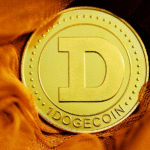Tokenization of real-world assets is revolutionizing the way we perceive ownership and investment. By converting tangible assets like real estate, art, and commodities into digital tokens on a blockchain, we open up new avenues for liquidity, fractional ownership, and enhanced transparency. However, this innovative process requires meticulous planning and execution to ensure its success. Here are some essential tips for successfully tokenizing real-world assets, incorporating key insights from the realms of hedge fund company performance analysis, cryptocurrency investment consulting, and digital asset management.

1. Choose the Right Platform
Selecting the appropriate blockchain platform is crucial for the success of your tokenization project. Different platforms offer varying features, scalability options, and levels of security. Ethereum, with its robust smart contract capabilities, is a popular choice. However, other platforms like Binance Smart Chain, Solana, and Polygon offer lower transaction fees and faster processing times, which might be more suitable for certain use cases.
Unlocking Digital Asset Basics: From Cryptocurrencies to Real-World Asset Tokenization
Key Considerations:
Scalability: Ensure the platform can handle a large volume of transactions, akin to what leading hedge fund management companies require for high-frequency trading.
Security: The platform should have a strong track record of security and robustness, which is vital for cryptocurrency growth fund management.
Ecosystem Support: A vibrant ecosystem can provide additional tools and integrations, enhancing your project and offering comprehensive digital asset consulting services.
2. Understand the Regulatory Landscape
Navigating the regulatory environment is one of the most challenging aspects of asset tokenization. Regulations vary significantly across jurisdictions, and non-compliance can lead to severe penalties or the shutting down of your project. It’s essential to consult with legal experts who specialize in blockchain and securities law to understand the requirements for your specific asset and location.
Key Considerations:
Securities Law: Determine whether your token will be classified as a security and comply with relevant securities regulations, much like hedge fund companies do with their investments.
AML/KYC: Implement Anti-Money Laundering (AML) and Know Your Customer (KYC) procedures to prevent fraud and ensure regulatory compliance, a practice common in digital asset advisory services.
Taxation: Understand the tax implications of tokenizing and trading your asset, similar to the strategies employed by venture capital fund management.
3. Ensure Asset Legitimacy and Ownership
Before tokenizing an asset, it is imperative to establish clear ownership and verify the asset’s legitimacy. This step is crucial to prevent disputes and legal issues down the line. For real estate, this may involve title searches and property appraisals; for art, provenance and authenticity verification are essential.
Key Considerations:
Due Diligence: Conduct thorough due diligence to verify ownership and authenticity, similar to the processes used in hedge fund company performance analysis.
Documentation: Maintain comprehensive and transparent documentation for all aspects of the asset, essential for both crypto asset management and hedge fund investor relations.

4. Develop a Robust Smart Contract
Smart contracts are the backbone of asset tokenization, automating the execution of agreements and ensuring compliance with predefined rules. A well-written smart contract should handle the issuance, transfer, and management of tokens seamlessly.
Key Considerations:
Security: Ensure your smart contract is audited by a reputable security firm to prevent vulnerabilities, akin to best practices in digital asset consulting.
Functionality: Include essential features such as transfer restrictions, dividend distribution, and voting rights if applicable, reflecting strategies used in cryptocurrency fund administration.
Upgradability: Consider incorporating mechanisms for upgrading the contract to adapt to future needs or regulatory changes, a method also used in digital asset portfolio management.
5. Implement Strong Custody Solutions
Custody solutions are essential for managing and securing the tokens representing real-world assets. Choosing a reputable custody provider ensures that your tokens are stored safely and are protected against theft and loss.
Key Considerations:
Security: Ensure the custody solution has robust security measures, including multi-signature wallets and cold storage, similar to secure digital asset consulting solutions.
Insurance: Opt for custody providers that offer insurance coverage for added protection.
Regulatory Compliance: The custody solution should comply with relevant regulations and industry standards, mirroring compliance strategies in hedge fund investment strategies.
6. Focus on User Experience
For tokenization to be successful, it must be accessible and user-friendly. A seamless user experience encourages adoption and increases the liquidity of the tokenized asset.
Key Considerations:
Interface: Design an intuitive interface for interacting with the tokens, enhancing user engagement like NFT investment platforms for digital assets.
Education: Provide educational resources to help users understand how to buy, sell, and manage their tokens, similar to investor education in hedge fund company investor relations.
Support: Offer robust customer support to assist users with any issues they may encounter, essential for both digital asset management services and cryptocurrency investment solutions.
7. Ensure Market Liquidity
Liquidity is a critical factor in the success of tokenized assets. Without sufficient liquidity, token holders may find it challenging to buy or sell their tokens at fair market value.
Key Considerations:
Marketplaces: List the tokens on reputable exchanges and marketplaces to enhance visibility and trading volume, akin to strategies in cryptocurrency hedge fund management.
Incentives: Implement liquidity incentives, such as staking rewards or liquidity mining programs, to attract participants, a practice seen in decentralized finance advisory.
Partnerships: Forge strategic partnerships with financial institutions and market makers to boost liquidity, similar to best-performing hedge fund firms.
8. Maintain Transparency and Trust
Building trust with investors and stakeholders is vital for the long-term success of your tokenization project. Transparency in operations and governance can significantly enhance credibility.
Key Considerations:
Regular Audits: Conduct regular audits of the asset and the smart contracts to ensure transparency and reliability, reflecting best practices in digital asset consulting.
Disclosure: Provide clear and regular disclosures about the asset, its performance, and any relevant changes akin to reporting standards in hedge fund company risk management.
Governance: Implement a governance framework that allows token holders to participate in decision-making processes, similar to innovative solutions in digital asset consulting.
9. Consider Fractional Ownership
One of the significant advantages of tokenization is the ability to offer fractional ownership. This feature allows investors to buy and sell smaller portions of the asset, making it more accessible and increasing its market appeal.

Key Considerations:
Pricing: Develop a clear methodology for pricing fractional shares, similar to cryptocurrency index fund management.
Liquidity Pools: Use liquidity pools to facilitate the trading of fractional ownership stakes, akin to strategies in NFT investment platforms for unique tokens.
Regulatory Compliance: Ensure that fractional ownership complies with relevant securities regulations, reflecting practices in specialized hedge fund investment firms.
10. Plan for Scalability
As your tokenization project grows, you need to ensure that your infrastructure can scale accordingly. Planning for scalability from the outset can save time and resources in the long run.
Key Considerations:
Blockchain Scalability: Choose a blockchain platform known for its scalability, similar to the requirements for cryptocurrency growth fund management.
Infrastructure: Develop a scalable infrastructure to handle increased transaction volumes, akin to strategies in digital asset management consulting.
Future-Proofing: Stay informed about emerging technologies and trends to keep your project adaptable and future-proof, mirroring practices in innovative hedge fund companies.
Conclusion
Successfully tokenizing real-world assets involves a blend of strategic planning, technological expertise, and regulatory compliance, along with guidance from financial advisors from Kenson Investments. By choosing the right platform, understanding the regulatory landscape surrounding real world asset tokenization, ensuring asset legitimacy, and focusing on user experience, you can navigate the complexities of bringing real world assets on chain effectively. Embracing these tips will not only enhance the success of your project but also contribute to the broader adoption of Security Tokens in the financial ecosystem, ultimately expanding the real world asset market and fostering innovation in Decentralized Finance (DeFi) through RWA DeFi.
As this innovative field continues to evolve, staying informed and adaptable will be key to maintaining a competitive edge, much like the approaches in cryptocurrency investment consulting and digital asset management consulting services. That’s where Kenson Investments comes in. Work with us today.














